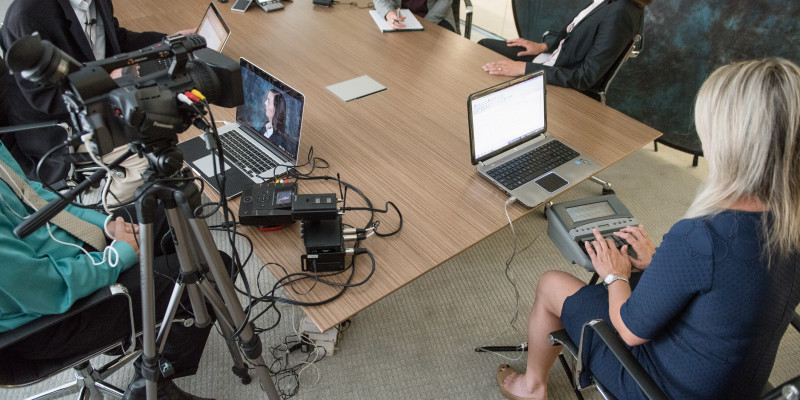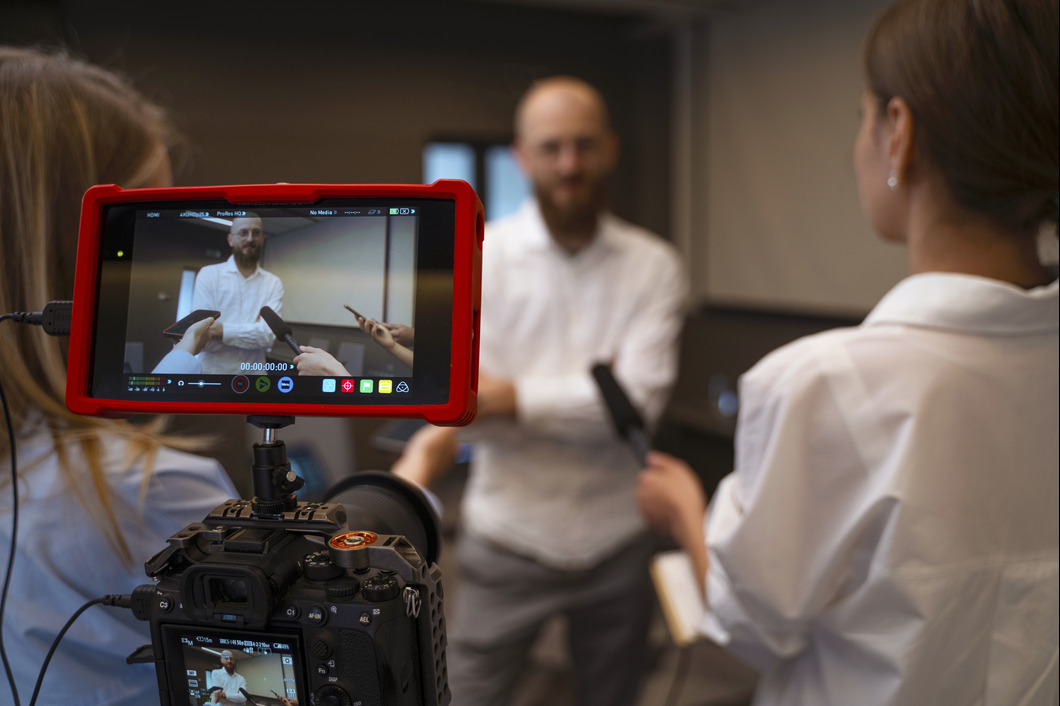How Legal Videography Supports in Preserving Vital Evidence for Litigation
The Relevance of Legal Videography in Modern Legal Process
In contemporary lawful settings, the integration of lawful videography has actually become increasingly substantial, working as a vital tool in the paperwork and presentation of evidence. This method not just makes sure an exact visual account of testimonies but likewise records critical non-verbal signs that may influence juror assumptions. As the lawful landscape progresses with technological improvements, the ramifications of top notch videography expand beyond mere paperwork, elevating essential inquiries regarding its effect on judicial results and the total stability of the legal procedure. What stays to be discovered is how these advancements might shape future legal techniques.
Meaning of Legal Videography
Lawful videography refers to the specialized technique of recording audio and visual web content for use in lawful settings. This technique includes different kinds of recordings, consisting of depositions, witness statements, and test presentations, which offer to document key aspects of legal process. The main purpose is to create an exact and trustworthy visual record that can be used in court or for pre-trial prep work.
Lawful videographers are trained professionals who make use of sophisticated recording equipment and methods to ensure top notch video and audio capture. They are skilled in the legal criteria and requirements regulating the admissibility of video clip proof, making their know-how important in the legal procedure.

Benefits in Legal Procedures
The consolidation of lawful videography right into modern-day lawful procedures offers various benefits that improve both the effectiveness and performance of the judicial procedure. One primary advantage is the accurate and irreversible documentation of court room proceedings, which can be vital for appeals and record-keeping. Unlike typical transcription approaches, video records non-verbal hints and the overall context of testaments, offering a richer, more nuanced account of events.
Furthermore, lawful videography can enhance the discussion of evidence (legal videography). By aesthetically demonstrating elements of a case, such as mishap reconstructions or specialist analyses, lawyers can convey intricate information better, making it less complicated for judges and courts to grasp critical factors. This can cause more enlightened decision-making and outcomes
Furthermore, lawful videography advertises availability. Recorded depositions can be examined from another location, allowing legal groups to prepare better without the restrictions of geographical constraints. This convenience aids in situation prep work and method development.
Finally, the expert top quality of videography offers reputation to the proceedings, enhancing the seriousness and value of the lawful procedure. legal videography. In recap, lawful videography considerably adds to a more transparent, effective, and impactful judicial system


Enhancing Witness Testimonies
Witness testimonies play a vital role in lawful process, and using videography dramatically improves their impact and effectiveness. By capturing the subtleties of a witness's these details temperament, tone, and body movement, legal videography gives a detailed understanding of the statement that composed transcripts alone can not communicate. This graph aids in preserving the witness's initial declarations, ensuring that jurors and lawyers can regard the statement in its intended kind.
Additionally, videography allows for an extra appealing discussion of evidence, as jurors are frequently extra receptive to audio-visual materials compared to traditional paperwork. The capacity to observe a witness's mood boosts the authenticity of their statements, consequently increasing the convincing power of their testimony. Furthermore, video recordings can be used for training and preparation, enabling lawyers and witnesses to see post evaluate and improve their presentations.
In situations where witnesses may be unavailable for test, videography ensures that their statements can still be presented, securing the honesty of their accounts. Overall, the assimilation of videography in legal proceedings markedly improves the top quality and reliability of witness testaments, fostering an extra informed and equitable judicial process.
Influence on Court Understanding
Catching witness statements on video clip not only improves their shipment however additionally significantly influences court understanding of the case. The visual and auditory aspects of video clip recordings give jurors with a more immersive experience, allowing them to perceive nuances in tone, body movement, and emotional expressions that could be lost in written records. This multi-sensory interaction fosters a much deeper connection with the testimony, aiding jurors in realizing the complexities of the case.
Additionally, legal videography can aid make clear intricate information and guarantee that bottom lines exist in a coherent manner. Jurors commonly value the chance to review vital statements during considerations, enhancing their comprehension of the proof. The capacity to observe a witness's disposition can also impact their credibility evaluation, as jurors may form judgments based on aesthetic signs that reverberate with their understandings of truthfulness and reliability.
Moreover, using video can simplify the presentation of proof, making it much more accessible and remarkable for jurors. In general, the strategic application of legal videography plays an essential role in improving jury understanding, inevitably adding to a fairer and extra informed lawful process.
Future Trends in Legal Videography
Progressively, lawyers are recognizing the transformative capacity of emerging innovations in lawful videography. As the legal landscape progresses, the assimilation of man-made useful reference knowledge (AI) and device understanding is set to reinvent the means video proof is captured, processed, and offered. AI algorithms can examine substantial amounts of video footage to determine pertinent sectors, enhancing effectiveness and making certain that crucial info is not forgotten.
Furthermore, improvements in digital fact (VR) and augmented truth (AR) are poised to supply immersive experiences in courtrooms. These technologies allow jurors to picture criminal activity scenes or recognize intricate scenarios in a more appealing way, possibly enhancing their understanding and retention of proof.
The surge of cloud-based solutions likewise promotes the safe and secure storage and sharing of video evidence, allowing for seamless collaboration among legal teams. legal videography. As remote hearings become more prevalent, premium lawful videography will certainly play a crucial duty in ensuring that remote testaments are recorded precisely and provided successfully
Final Thought
Finally, legal videography functions as an essential device in modern legal proceedings, enhancing the precision and clearness of evidence discussion. By recording witness statements in a visual format, it helps with a deeper understanding for jurors and maintains important statements for future referral. As modern technology continues to advance, the assimilation of high-grade videography is expected to expand, better solidifying its duty in promoting the integrity and performance of the legal procedure.